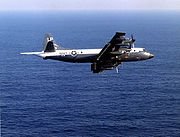ponytug
Super Member
Dear Carl,
I'm not sure I completely understand the question, but here goes.
Attachments for tractors are typically designed for operation at a fixed speed, but ground speed is adjusted to compensate. Many tractor speedometers are marked with PTO points in various gears.
There are two standard PTO speeds, 540, the old US standard, and 1000rpm, the old European standard. Tractor manufacturers try to have the gearing on the PTO output such that the engine rpm at the desired PTO speed (540/1000) is in the middle of the engine torque/HP curve, where it will be most fuel efficient. Many (most?) tractor will operate at either speed.
You can operate attachments at speeds other than the PTO benchmark speed, but there are drawbacks, e.g. fragmenting attachments, or carbonized engines, etc.
So, in your case, the blower wants 540rpm input, so you would want to design your hydraulic pump to put out 540 when you enough have enough HP to move around while operating the blower, which will consume some number of HP to run at 540. i.e. unless you plan to use the leaf blower with a wide open throttle, you might want to size the motor such that it hits 540 at say 2/3rds throttle, but checking to ensure that the motor can handle the full flow of the PT PTO pump at WOT.
Does that help?
All the best,
Peter
I'm not sure I completely understand the question, but here goes.
Attachments for tractors are typically designed for operation at a fixed speed, but ground speed is adjusted to compensate. Many tractor speedometers are marked with PTO points in various gears.
There are two standard PTO speeds, 540, the old US standard, and 1000rpm, the old European standard. Tractor manufacturers try to have the gearing on the PTO output such that the engine rpm at the desired PTO speed (540/1000) is in the middle of the engine torque/HP curve, where it will be most fuel efficient. Many (most?) tractor will operate at either speed.
You can operate attachments at speeds other than the PTO benchmark speed, but there are drawbacks, e.g. fragmenting attachments, or carbonized engines, etc.
So, in your case, the blower wants 540rpm input, so you would want to design your hydraulic pump to put out 540 when you enough have enough HP to move around while operating the blower, which will consume some number of HP to run at 540. i.e. unless you plan to use the leaf blower with a wide open throttle, you might want to size the motor such that it hits 540 at say 2/3rds throttle, but checking to ensure that the motor can handle the full flow of the PT PTO pump at WOT.
Does that help?
All the best,
Peter
So here is a real dumb question JJ. I assume 540 RPM PTO speed is what you get when the engine is cranking - ie maximum top speed. And that most people are probably running there standard PTO at 400 RPM or so unless they are flogging the machine?
I ask because I am looking at this chipper that wants 35 HP and 540 RPMs Just making sure when I don't hit the RPM I am still OK...

